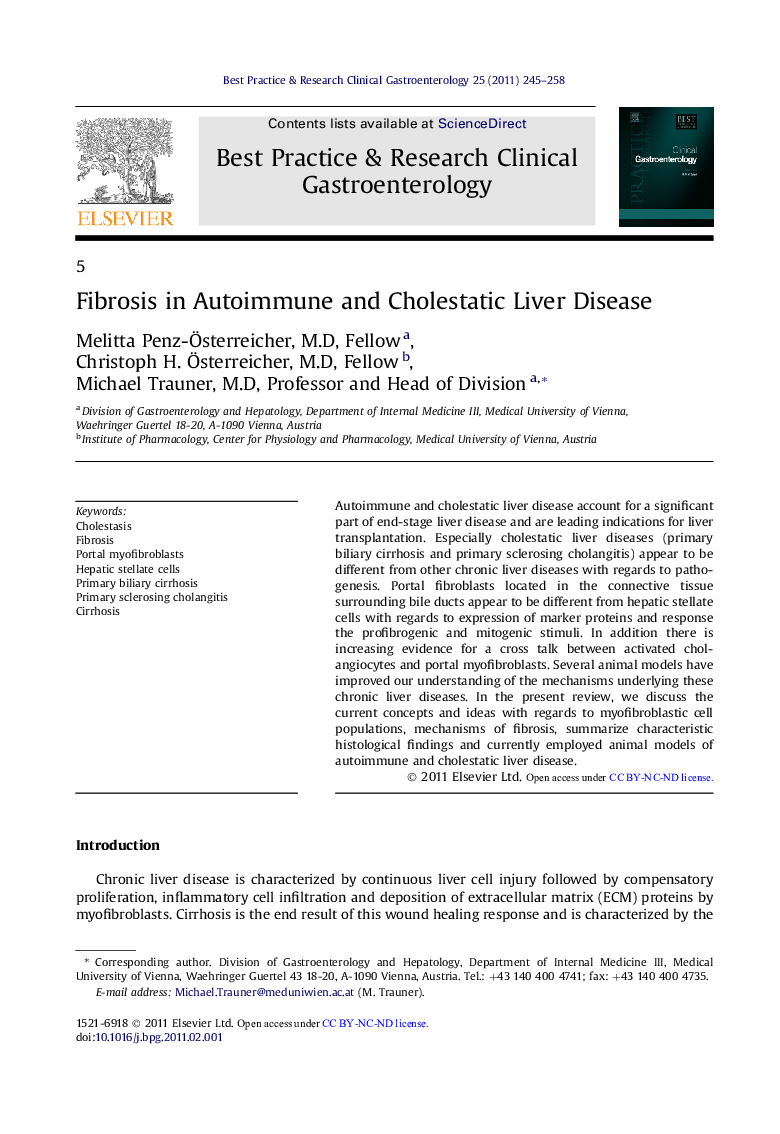| Article ID | Journal | Published Year | Pages | File Type |
|---|---|---|---|---|
| 6086526 | Best Practice & Research Clinical Gastroenterology | 2011 | 14 Pages |
Autoimmune and cholestatic liver disease account for a significant part of end-stage liver disease and are leading indications for liver transplantation. Especially cholestatic liver diseases (primary biliary cirrhosis and primary sclerosing cholangitis) appear to be different from other chronic liver diseases with regards to pathogenesis. Portal fibroblasts located in the connective tissue surrounding bile ducts appear to be different from hepatic stellate cells with regards to expression of marker proteins and response the profibrogenic and mitogenic stimuli. In addition there is increasing evidence for a cross talk between activated cholangiocytes and portal myofibroblasts. Several animal models have improved our understanding of the mechanisms underlying these chronic liver diseases. In the present review, we discuss the current concepts and ideas with regards to myofibroblastic cell populations, mechanisms of fibrosis, summarize characteristic histological findings and currently employed animal models of autoimmune and cholestatic liver disease.
